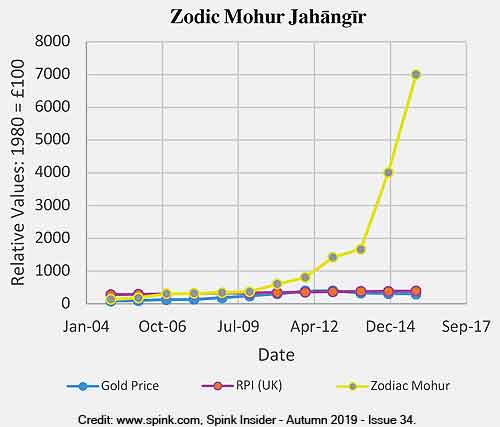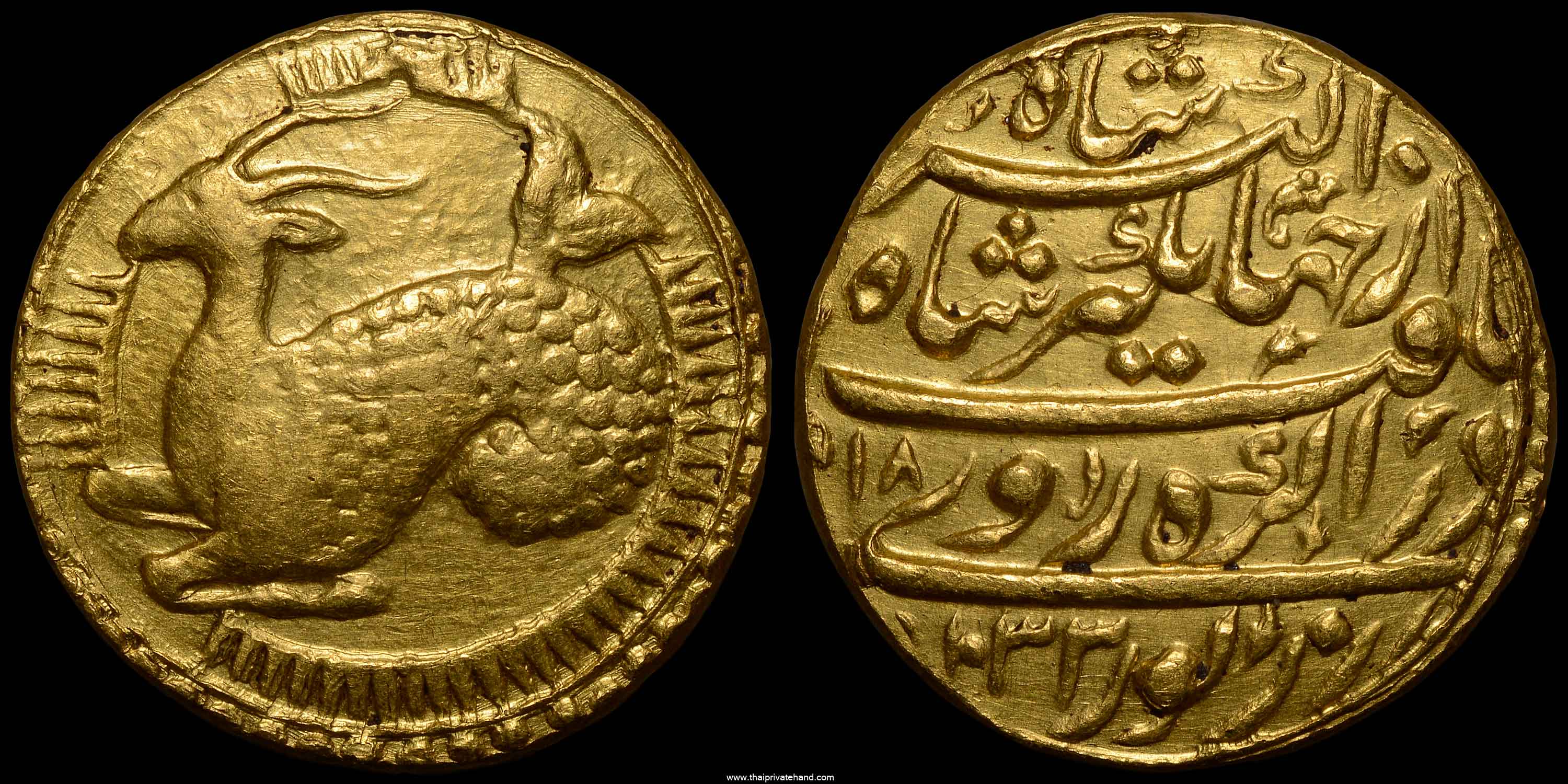
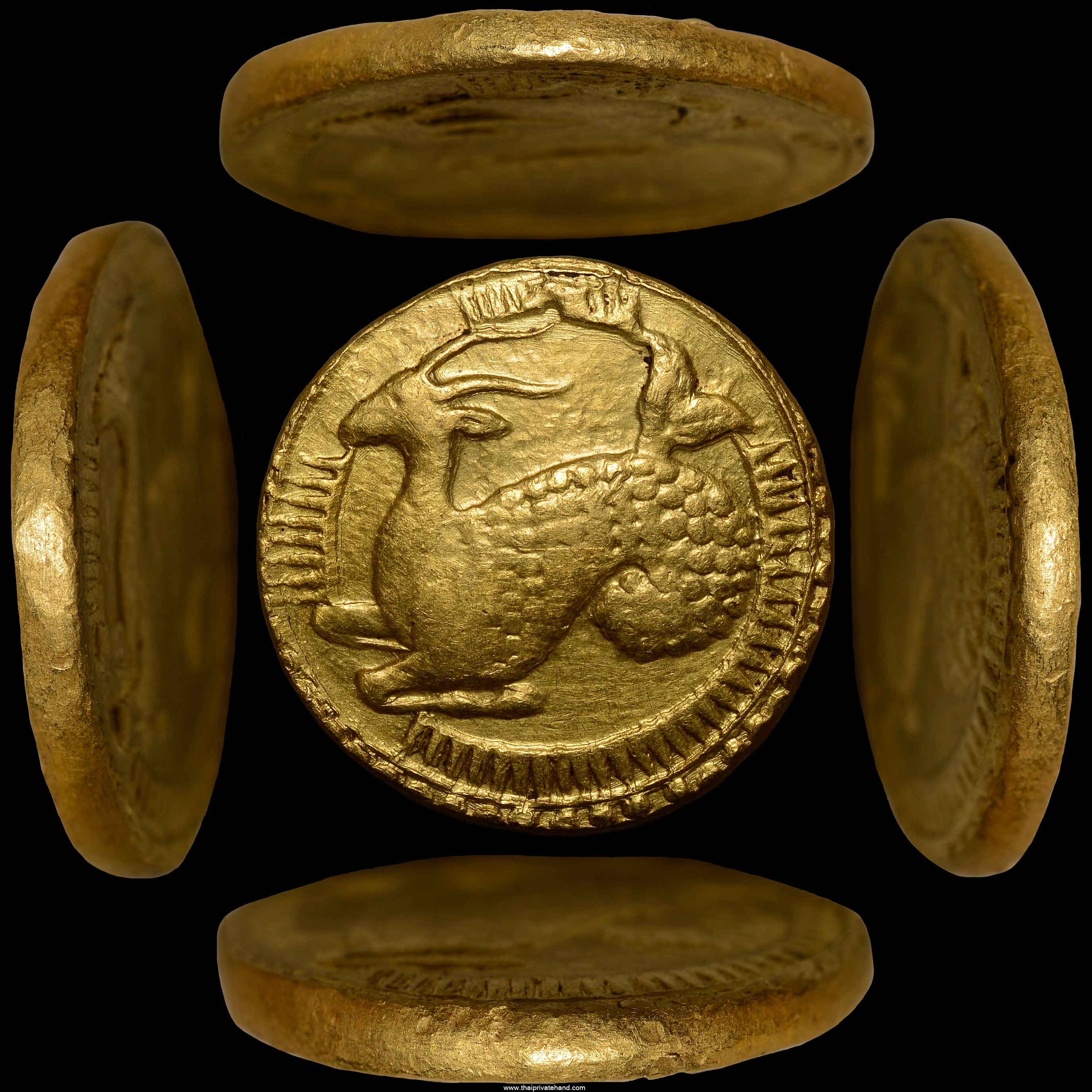
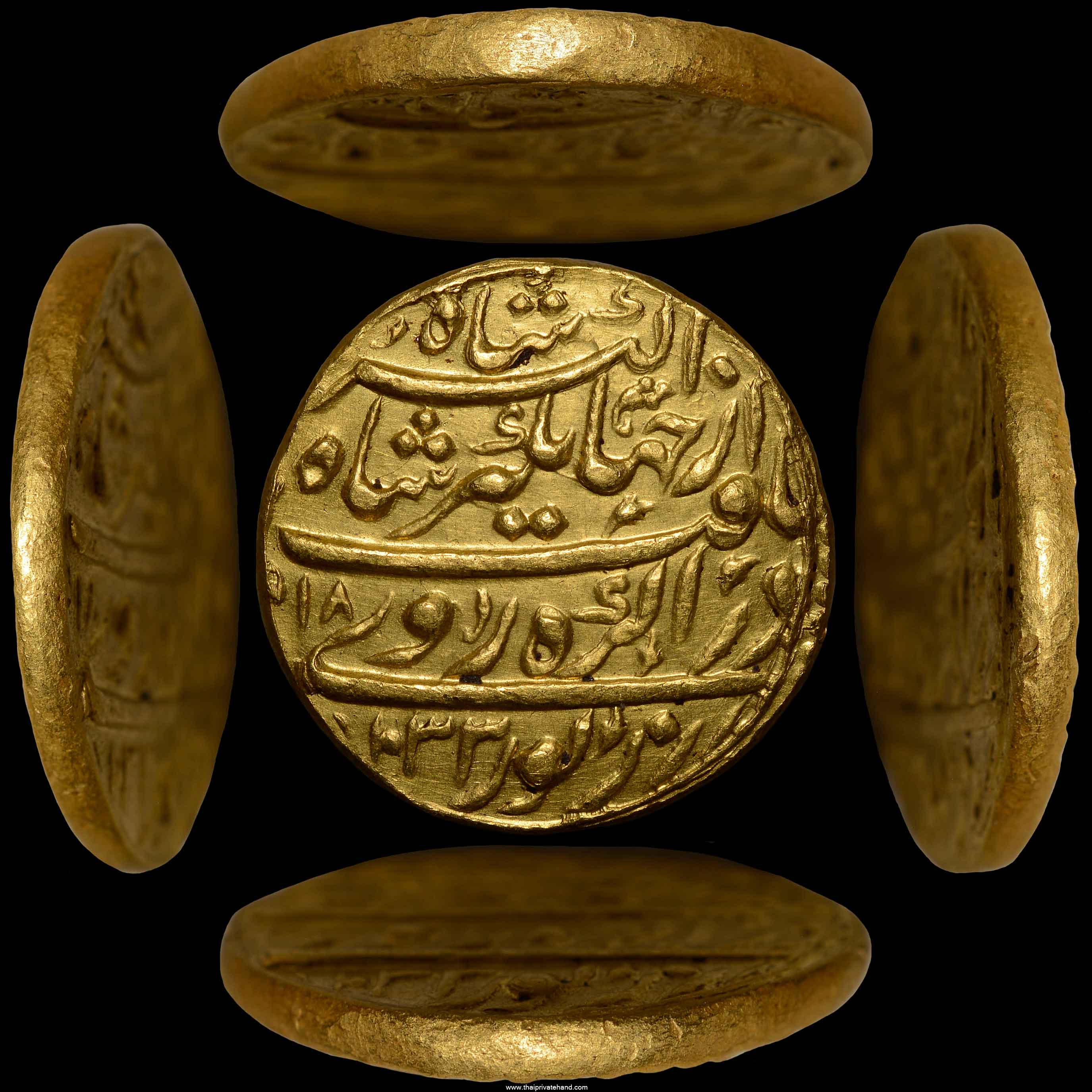
MUGH-16 Click on image for enlargement.


Indian Coins, Mughal. Nuruddin Jahangir , 1605-1627 AD,
Gold Mohur 10.88 g. 19 mm. die-axis 3 o'clock.
Obverse: Goat (Capricorn). Mythical monster with forepart of goat and tail of fish left,
in radiate circle, within double circles with pellet between.
The sign of capricorn corresponds to the month in which this coin was issued.
Reverse: Persian legend, YAFT DAR AGRA DAD ZEENAT-I-ZAR AZ JAHANGIR SHAH AKBAR SHAH
The face of money received beauty at Agra through Jahangir Shah, (son of) Akbar Shah ,
AH year 1033, regnal year 18 , within double circles with pellet between.

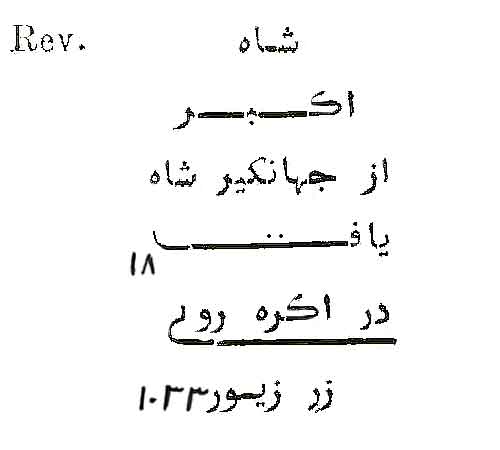
The coin is die-identical with the specimens in the collection of the British Museum, London, England, (1335994001).
Bode museum, Berlin, Germany, (18248280), (18248281). Ashmolean Museum, University of Oxford, England. The Metropolitan Museum of Art, New York.
Islam prohibits displaying the images or idols of human or animals. As soon as Shah Jahan
came to throne, he imposed a death penalty for the use of these coins as well as those having the portrait or animal signs
and ordered that they should be returned to the royal mint and melted. And for this reason, these coins are now
rarely seen in museums or private collections, these coins are extremely rare. It is important to distinguish
the early strucks which were official issues of the Mughal court, from the later imitations, which are private
strike made for purposes of bullion accumulations, or for the deception of collections.
There are several variations of this type, because of different dies.
An extraordinary rarity of Indian coinage in genuine Mohur of the Mughal Imperial mints
class A, solid gold coin not a filled metal electrotypes / reproductions.
Categories of Zodiac Mohurs
Original strikes are very rare. Due to the great demand for the coins collector restrikes were issued occasionally over the centuries,
and are still scarce, although they are more often encounted than the originals. There are also many fabrications and imitations of variable
quality. Numismatists have devided the portrait and zodiac series Mohurs into four classes:
1. Class A: undisputed original strikes, characterized by deep relief, somewhat uneven flans, and rounded calligraphy.
2. Class B: possibly original strikes, but more likely minted in the first decade or two following Jahangir's death.
The relief is shallower, of a more uniform appearance, and the calligraphy is more square.
3. Class C: Mohurs of Class A or B that have had the zodiac type removed and re-engraved.
4. Class D: later imitations and forgeries.
Prices vary a lot: a Class D can sell for less than a hundredth (1%) of the price of Class A coin. The value of genuine issues has far
outstripped inflation and the value of other investments such as gold.
